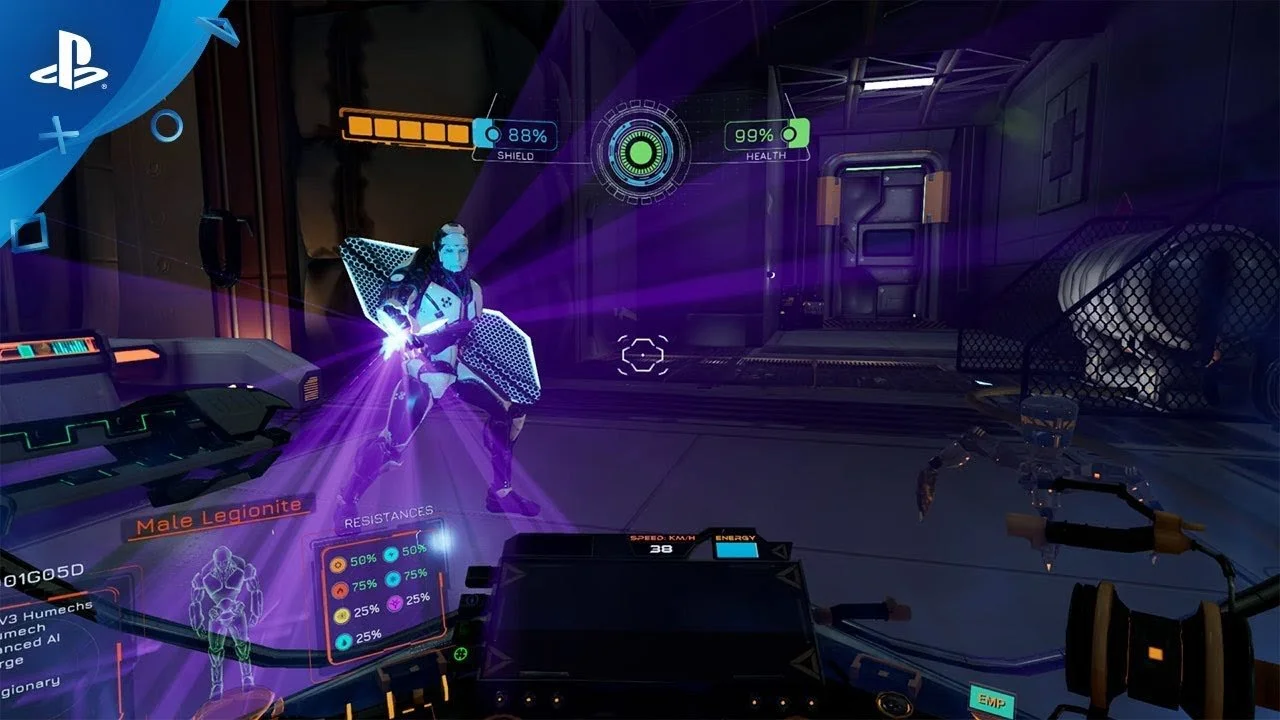Optimizing for Virtual Reality in Unreal Engine
Ensuring optimal framerate performance is critical for all game types, but it is particularly vital for virtual reality (VR) applications. A transient drop in frames can lead to physical discomfort for the user and may induce motion sickness. Unreal Engine 4 (UE4) offers a variety of tools and options designed to help developers visualize, debug, and resolve issues that may lead to frame loss. The following outlines key guidelines and best practices that were implemented during the development of Scraper: Gauntlet using Unreal Engine.
Pre-Production
Before you begin developing a VR game, you want to make sure you are working with optimized assets and have a good handle on their relative cost to render on the targeted platforms. This means working with a lower poly count that utilize newer modeling techniques such as material layering and trim sheets to maintain a consistent and high visual quality for your assets.
Try to identify which assets can reuse common materials such as plain metals and rubber surfaces. Any variations you want to those surfaces would then need their own material instances.
When it comes to surface materials you will also want to use as few texture samples as possible to reduce unique texture fetches and overall instruction count. One way to do this is through a strategy called grey-packing or channel-packing textures. This allows you to pack textures that only use grey values such as Roughness, Metallic, and Ambient Occlusion channels.
Performance Guidelines
As you begin down your path to developing your VR game in Unreal, there are a few major settings and guidelines that should be followed to start on the right foot. Firstly, enable Forward Shading nested in the rendering section in your project settings. The Forward Renderer was created at Epic specifically for Robo Recall, and is uniquely equipped and optimized to run VR applications.
Next we want to disable any of the expensive post processing effects such as Bloom, Auto-Exposure, and Screen-Space Ambient Occlusion. Screen and camera based effects like these can create artifacts and unnecessary performance overhead when enabled.
The last third guideline, and arguably the most important, is to use static lighting for everything. Only use dynamic non-shadow casting lights when absolutely necessary. Static lighting provides the fastest computation time when rendering a single frame for an environment.
Playtesting
During the entire development cycle of your project, you should be constantly testing on all platforms to make sure performance is maintained and the game runs as expected. This holds especially true for any new features or content that gets added at the mid to late stages of development.
Using the tools and methods provided in Unreal such as LODs, Instancing, Distance/View Frustum culling, Precomputed Visibility, and Level Streaming, will all help manage and maintain performance.
Unreal Engine provides a suite of tools to help optimize your VR games and applications. Use these tools provided by Unreal Engine to debug and optimize to give your team and your game the best chance to deliver a polished experience.
Profile Performance Regularly: Utilize tools such as the UE4 Profiler and Stat Commands to monitor performance metrics and identify bottlenecks early during development.
Optimize Render Settings: Adjust rendering settings, such as resolution and shadow quality, to balance visual fidelity and framerate. Consider using Level of Detail (LOD) techniques to reduce the polygon count for distant objects.
Manage Scene Complexity: Keep an eye on the number of actors and their combined polygon count in any given scene. Use tools like Hierarchical LOD (HLODs) to simplify complex regions.
Efficient Material Use: Design materials that are GPU-friendly by reducing the number of texture samples and using simpler shaders whenever appropriate.
Use Culling Techniques: Implement frustum culling and occlusion culling to avoid rendering objects that are out of view or obstructed, thereby freeing up resources for visible elements.
Profile and Optimize Blueprints: Continuously assess the efficiency of Blueprints. Employ function contexts and avoid unnecessary tick events to limit overhead during gameplay.
Test on Target Hardware: Regularly conduct tests on devices similar to the intended target hardware for the VR experience. This ensures the optimizations are effective across platforms.
Prioritize Performance Fixes: Address high-impact performance issues first before moving to minor enhancements. Make use of engine settings tailored for VR, such as setting frame rate and reducing latency.
Regular Playtesting: Engage in frequent playtesting sessions to gather feedback on VR performance. Pay close attention to user comfort and framerate stability during these tests.



